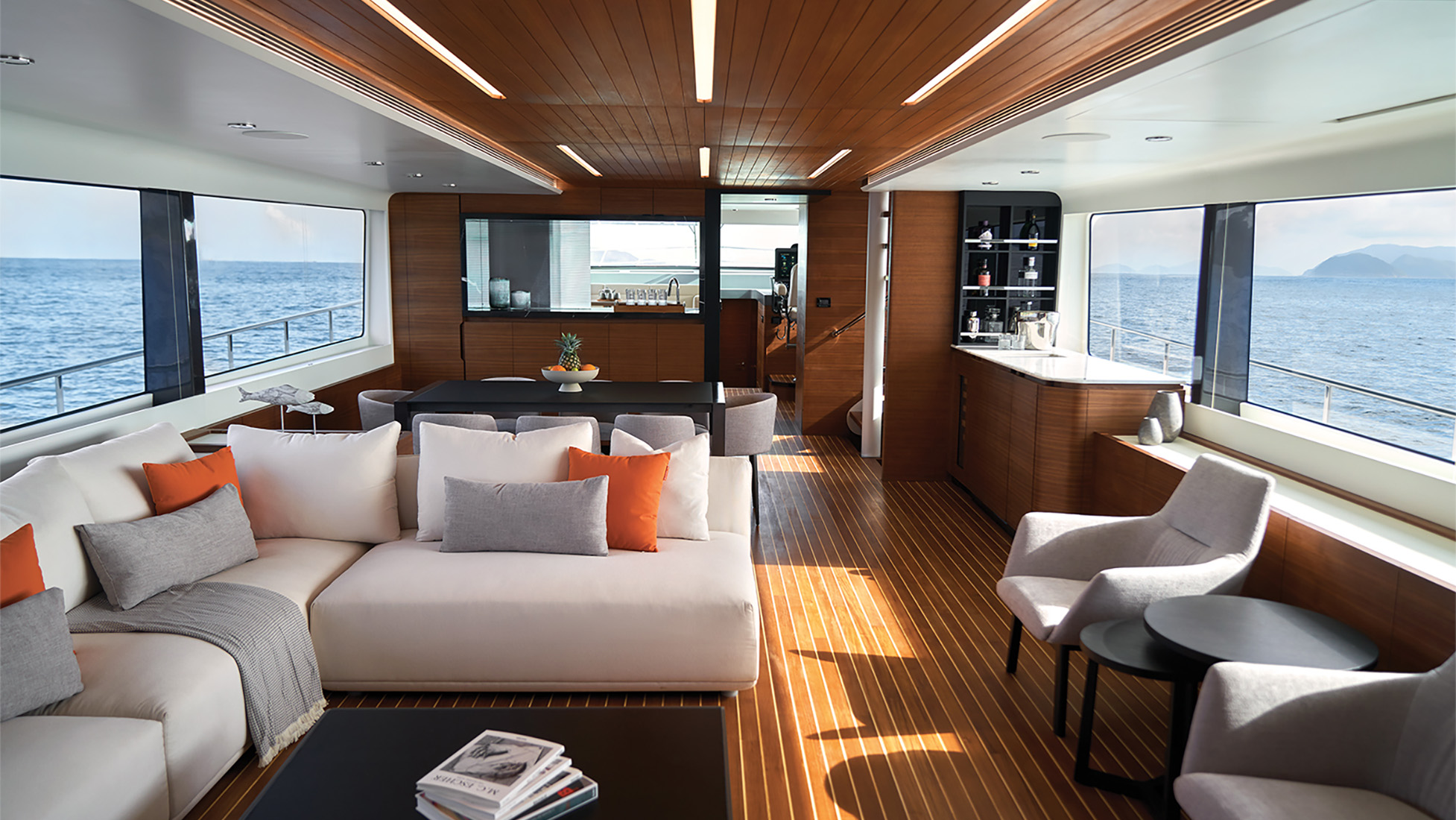
The new CLB88 from CL Yachts offers great value with the backing of an historic yard and the promise of a quality build
CL Yachts is the new yacht division of legendary boat builder Cheoy Lee, a Hong Kong boat building dynasty that made its name in yachting during the 1960s and 70s, when the company began building all-teak yachts in the 1950s, switching to fibreglass yachts in the 1960s.
From the 1990s on, Cheoy Lee switched its focus from yacht building to commercial boat building, though yachts still emerged from the yard. Among those builds were a pair of Ron Holland-designed expedition yachts, and a sport yacht series called the Alpha.
Now, Cheoy Lee is getting back into the yachting business in a serious way. The new CL Yachts division has been established, branding identity built up, and a new series of yachts is being developed.
Hans Lo represents the fifth generation of the family that owns Cheoy Lee, and how focuses on CL Yachts. He recruited product designer Jozeph Forakis to provide a fresh design voice.
One of the first results is the 27-metre CLB88. “We design our yachts from the engine room out,” says Jonathan Cannon, a qualified naval architect and senior sales manager for CL Yachts. That means that CL Yachts’ will produce a boat that is easier to maintain, and thus needs less expensive maintenance over time.
That’s immediately obvious when you enter the engine room from the swim platform. It’s easy to enter, easy to walk around in, and on my tour of the engines, not once did I need to duck my head to access any station of the engineering.
To appeal to the US market, Lo says CL Yachts offers plenty of space and storage, making for a comfortable stay on board, even for several days.
Up on the main deck, there is an enormous amount of space. The main salon is big and airy, with large windows and easily controlled sunscreens. Loose furniture dominates, and the feeling is wide open and relaxed. The dining area is forward in the saloon, but feels like part of the giant, open interior that has been created on the main deck.
The galley has been fashioned next to the main deck helm station. It’s a simple arrangement that lets the galley be out of sight of guests, or an integral part of the social life on the yacht. Partition walls can be closed off and the door sealed, turning the galley into part of a discrete crew area. If the galley is to be part of the social experience, then it can be opened up to the main salon quickly, and it is well appointed, with a nice seating area.
Descending the main staircase on the starboard side, there is access to big, ensuite cabins with ample head room. The shower stalls are big enough to comfortably move around in. A double cabin has two single beds that can slide together or apart, allowing some flexibility in sleeping arrangements. All the closets are built in cedar, which helps keep moisture away from clothes.
There are reasonably spacious crew quarters, accessed via the stern, housing up to four people in a good degree of comfort and close to the engineering access of the yacht.
Up top, a massive flybridge offers a considerable amount of space and a number of options for owners – there is capacity for an 800-kilogramme tender, deployed by Davit. A Williams 520, 5.2-metre Sport Jet Tender with seating for seven people, weighs about 700 kilogrammes (fully fueled).
The stern deck can also be made to house a tender, including jet skis, and it lowers directly into the water, making boarding easy. The swim platform can handle tenders of up to 900 kilogrammes.
The flybridge deck is equipped with a refrigerator, ice-maker, outdoor grill and a lot of seating, all covered with a big hard top. In short, guests can retreat to the flybridge while at anchor and find themselves there all day.
From the stern deck, guests can reach the bow seating area and sunpads via passageways that are wide and safe, guarded by high rails and securely protected by the sides.
The CLB88 offers approximately 1,000 nautical mile range at the 11-knot displacement speed, according to Jonathan Cannon. Though the range was established with the US market in mind, for Asia, it allows economical cruising around Hong Kong, or cruises to Sanya, the Philippines or Vietnam. For Singapore-based owners, it puts trips to the Riau Archipelago, Penang and Phuket within easy reach.
Cheoy Lee focuses on lightweight construction techniques, with Lo describing it as part of the construction ethos of the company. That carries over into CL Yachts, which has focused on honeycomb construction of the furniture and interior panels, and foam-cored hulls and superstructures to save weight. The CLB88 has a top speed of approximately 25 knots on twin Caterpillar C32 ACERT engines, with 1,600 horsepower each.
There is a long history of the hull design for the CLB88, which goes back to the early versions of the commuter yachts of the 1970s. One of the pioneering yachts of this category, Midnight Lace, was also built by Cheoy Lee.
The hull shape for the CLB88 features a fine entry to handle heavy seas and flat run aft, to prevent “squat” and increase efficiency at transitional speeds prior to planing.
The CLB88, which Lo describes as a modern classic, offers great value with a solid reputation and solid construction.
Technical Specifications:
LOA: 27.1m
LWL: 24.1m
Beam: 6.86m
Draught: 1.65m
Displacement: 79,000kg
Engines: 2x Caterpillar C32 Acert 1600bhp
Generators: Twin Kohler 53kW, 60Hz with Decision Maker 3500
Max Speed: 25kts
Fuel Capacity: 11,400l
Water Capacity: 1,740l
Grey Water Capacity: 1,740
lBlack Water Capacity: 1,100l
Cabins: 4
Crew Cabins: 2
Construction material: Fibreglass/composite
Classification: RINA Hull Construction Certificate
Design: forakis … design











